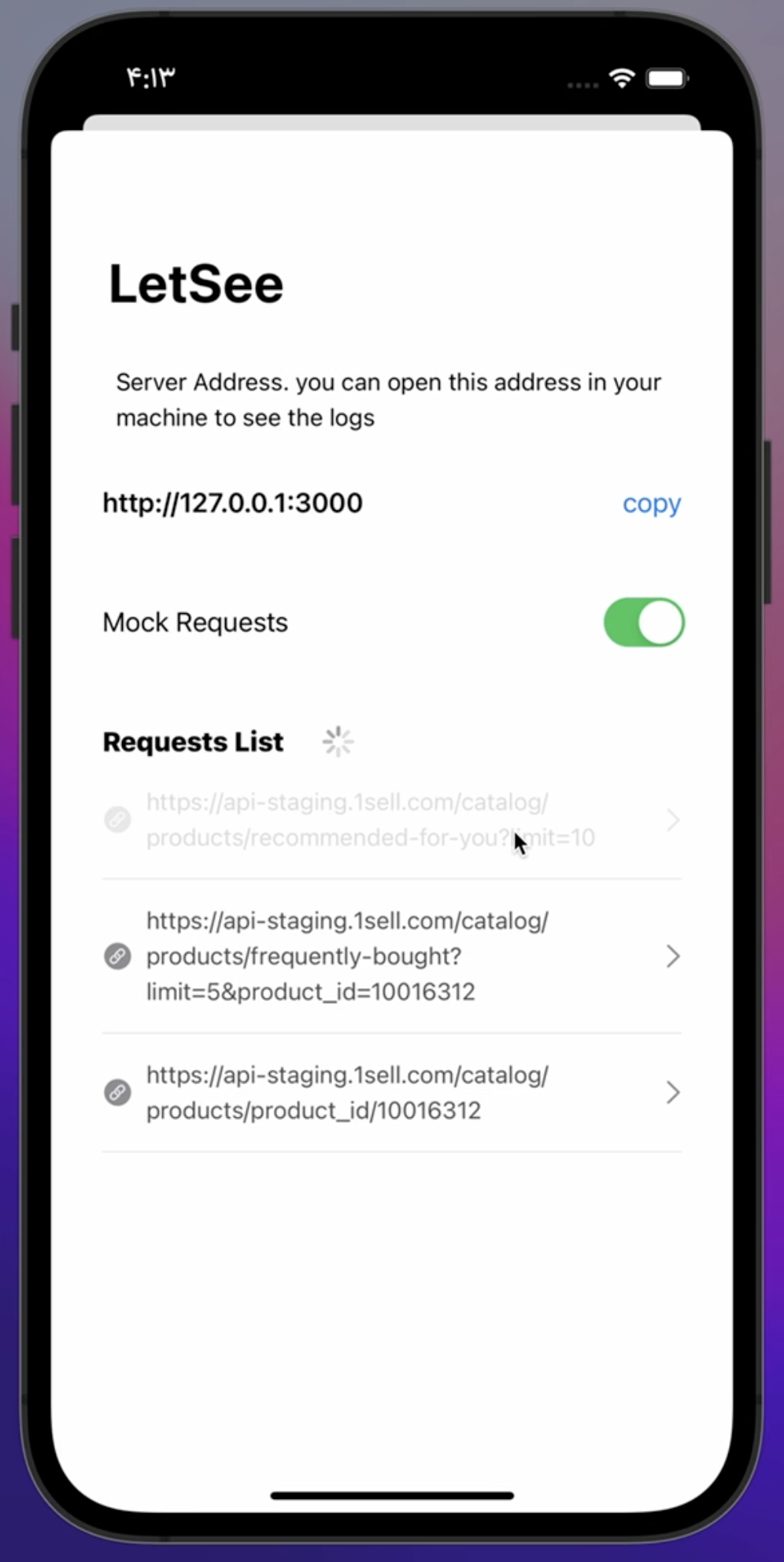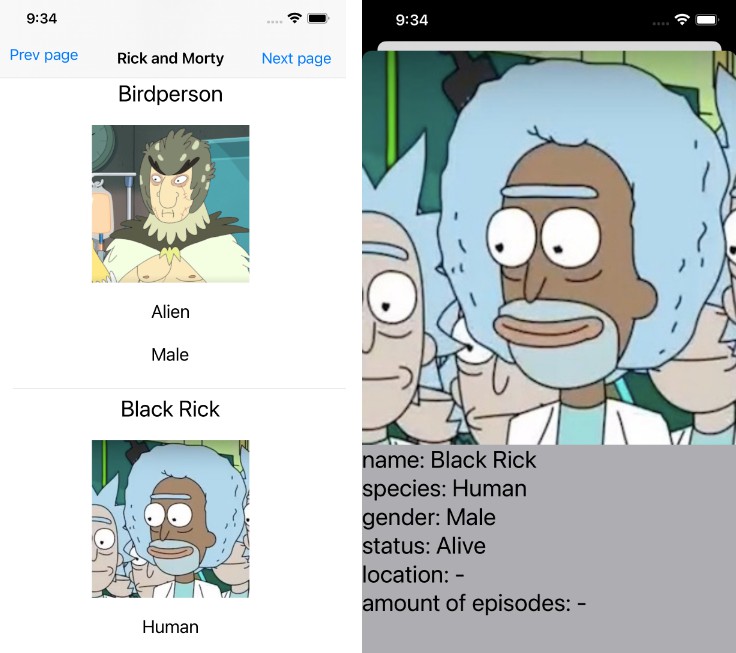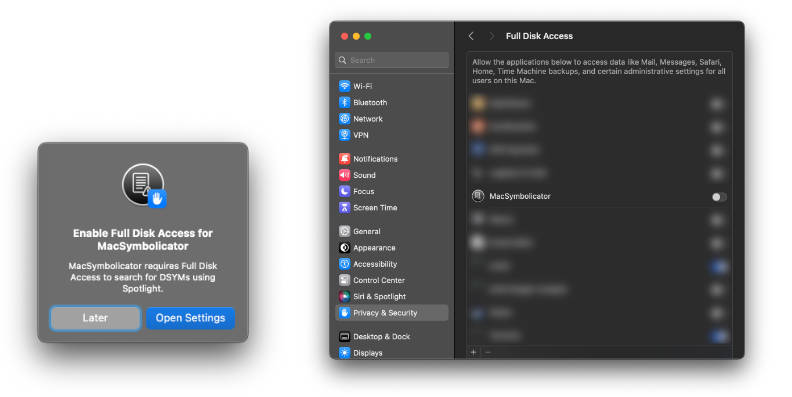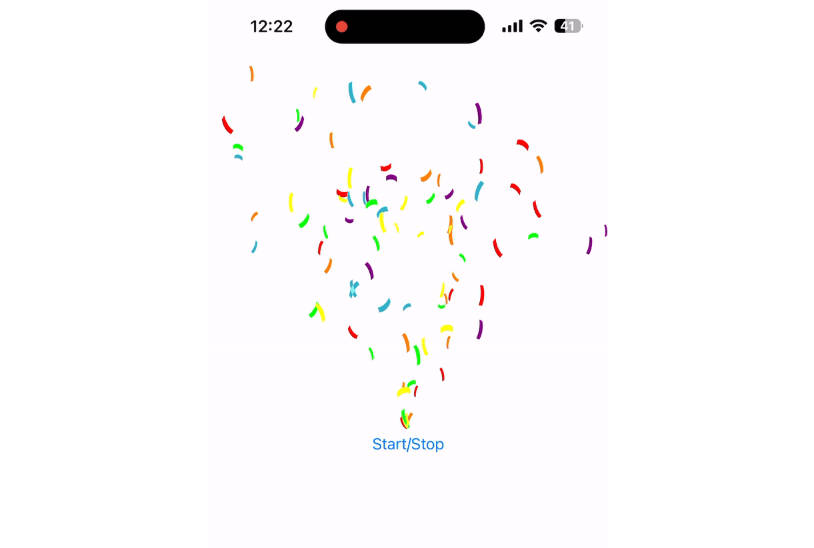Welcome to LetSee!
Table of Contents
What is wrong with Xcode’s console?
Many applications need to handle API calls and communicate with servers. The problem is by logging API calls (requests and responses) in Xcode’s console, you see a very crowded terminal, nasty and confusing information, moreover for a piece of data, you have to look through all printed texts in the terminal alongside with interface issues, library warnings, other logs and more … within a very ordinary, unorganized and pale color place. Are you tired of this?
Then what is LetSee?
LetSee, lets you see what is going on between your application and the server in a very neat, clean, and organized space. Do you like this?
LetSee+InAppView.mp4
LetSee consists of 2 modules to do its job which we will talk about them in the following section
Note: We took inspiration from WatchTower written by Adibfara.
Modularization
LetSee consists of 2 modules, each module brings a set of powerful tools to facilitate working with your networking system.
Core
LetSee Core Features
- Tracks and observes all API calls made through Moya, Alamofire, and …’s client
- GET, POST, PUT, DELETE, PATCH methods
- Query parameters, request and response body, and headers
- Response success and failure status, size, date, and latency
- Adjustable port for the server and the WebSocket server
- API call history, even If no browsers were open
- Search in the URLs of all requests
- Fully responsive UI
In App View
LetSee In App View Features
- Facilitates network request mocking
- Provides a neat way for defining mock response
- Intercepts the URLRequests and lets you choose a corresponding response
- Provides 4 default responses for every request (Live, Cancel, Custom Success, Custom Error)
- Lets you edit the response JSON
- Helps you test all of the response scenarios (to check if all scenarios have been implemented)
- Has a beautiful SwiftUI view
How To Use:
1. Add LetSee to your project
using this library is undoubtedly easy, currently we support CocoaPods and Swift Package Manager
CocoaPods
just import LetSee simply like other pods
// imports just core features
pod 'LetSee'
// imports two Moya providers (interceptor and logger)
pod 'LetSee/MoyaPlugin'
// in app view which helps you see the request and choose the respond
pod 'LetSee/InAppView'
/// there is one more module, if you want to use raw LetSee Interceptor without LetSee SwiftUI Request List View, you can import it like this.
pod 'LetSee/Interceptor'
2. Import LetSee
it completely up to you, if you have multiple Moya provider, you can keep LetSee as a global Variable otherwise just keep LetSee wherever you need it and be sure that its instance would be alive til you need the logger
#if DEBUG
-----------
import LetSee
let letSee = LetSee()
------------
// OR
class SomeAPIManagerClass {
...
let letSee = LetSee()
...
}
#endif
2.1 Using LetSee
LetSee needs to know about request and responses to log them, so we need to notify it like this
final class APIManager {
func sampleRequest(request: URLRequest) {
// makes this request identifiable by adding a unique id to its header
let request = request.addID()
// notifies letSee about this request
letSee.log(.request(request: request))
// runs the request
mockSession.dataTask(with: request) { data, response, error in
// code to handle the response....
// logs the response for the request we've just send.
letSee.log(.response(request: request, response: response, body: data))
}
.resume()
}
init() {}
}
2.2 Using LetSee alongside with Moya
Then you need to pass the LetSeeLogs to Moya as a plugin like this. LetSeeLogs is a MoyaPlugin which interrupts the requests and log them into LetSee
#if DEBUG
...
provider = MoyaProvider<Apis>(plugins:[LetSeeLogs(webServer: letSee.webServer)])
#endif
3. Bon Appétit
Yes, that’s it. Done, congratulation. Now just look at your Xcode’s console for this message
// the server address could be something else in your machine
@LETSEE> Server has started (192.168.1.100:8080/).
Next Features
- We need somehow open LetSee website in Safari (a button attached to window would be a great idea)
- It would be great if we have something similar to LetSee website in the application, a Page for requests list and a details’ page to show the details of that request.
- It is a good idea to have a BaseURL Provider, this way, we can achieve
Feature/URL(Devops team provides a new BaseUrl for each new feature and QA team tests each feature simultaneously without requiring new build)







